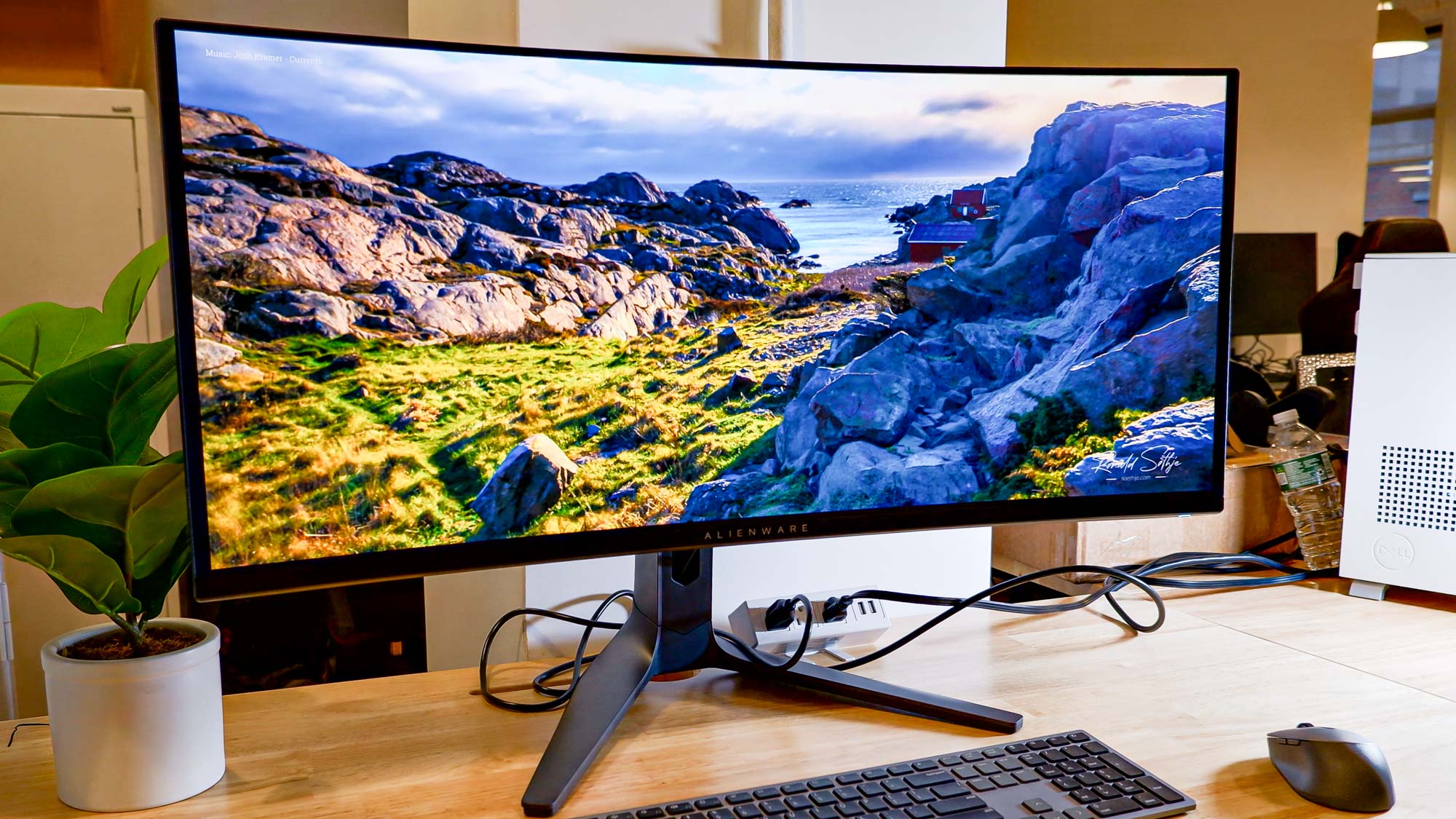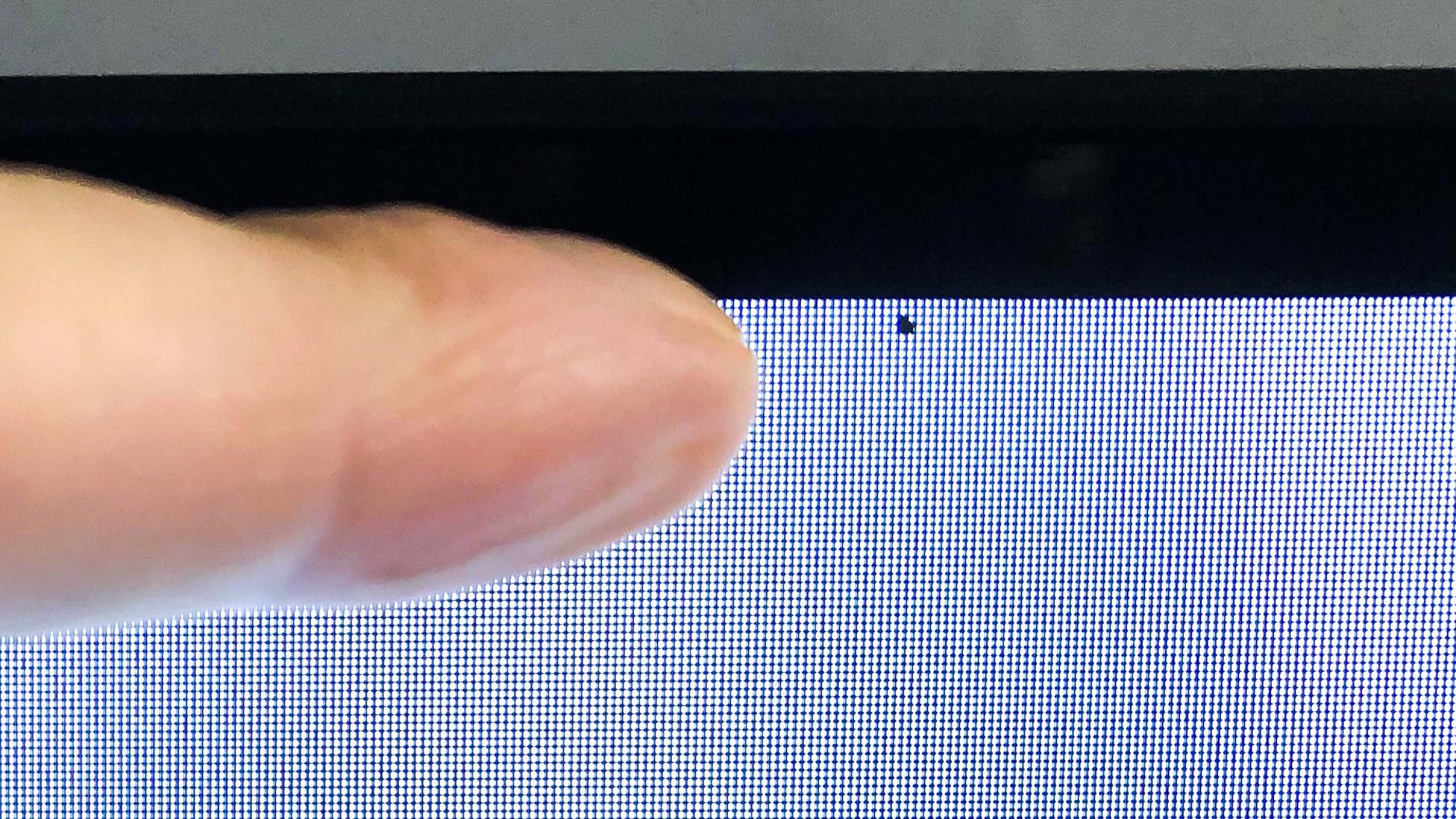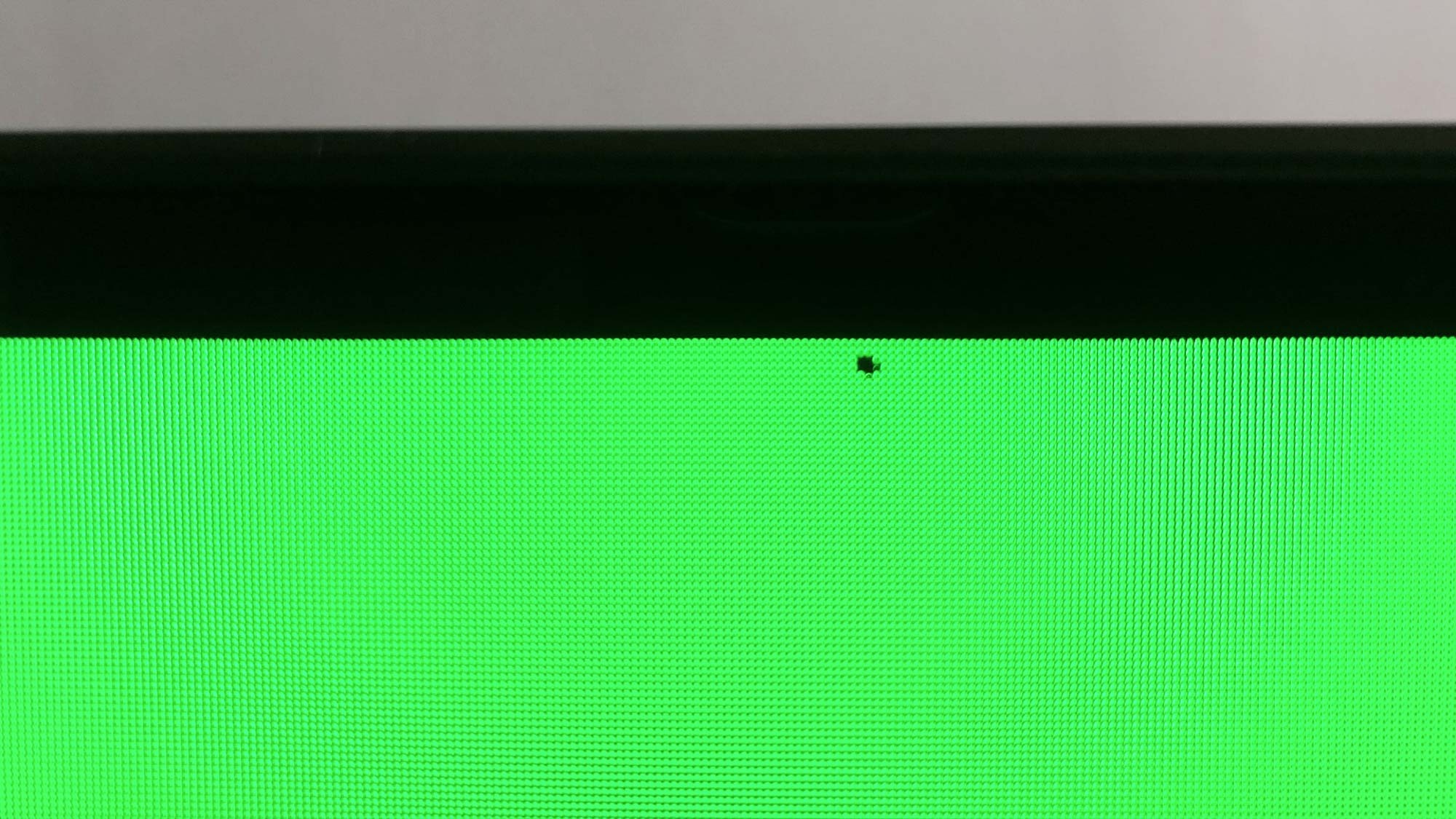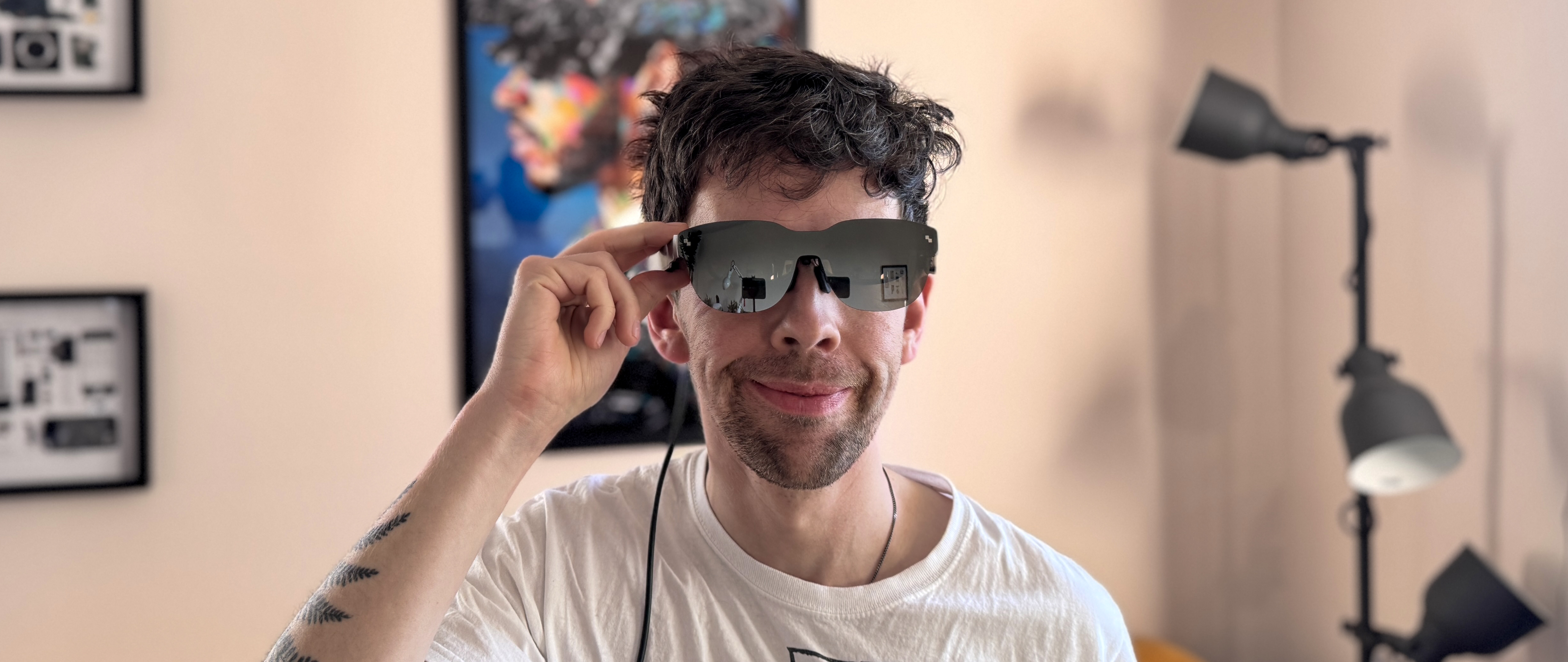This tiny defect nearly ruined one of the best gaming monitors ever
There year is 2023, so why are dead pixels still an issue?!

I'm lucky enough to own one of the best gaming monitors around, but it became blighted by a seemingly small defect that grew to become a serious problem I simply couldn't ignore. My Alienware AW3423DWF QD-OLED gaming monitor fell foul to dead pixels.
This forced me to take almost two months to get a replacement monitor. But it had to be done; once you see a dead pixel there's no going back.
Before I wade through the weeds of my Amazon returns woes, let me bring you up to speed on exactly what a dead pixel is.
Defective pixels have existed ever since LCD displays broke into the market. As such, this defect has plagued every flat screen technology — from the best OLED TVs to the best laptops — for decades.

Sometimes known as "stuck pixels" but more often referred to as "dead," this is a defect that will drive eagle-eyed A/V enthusiasts bananas. Dead pixels appear as tiny blots on your screen that will never change color or shape, regardless of what on-screen content you’re viewing.
If you’re unlucky enough to own a screen blighted with such a defect, you’re probably wondering what causes this annoying issue. In the majority of cases, dead pixels occur due to faulty power connections.
Dead pixels are a screen defect that will drive eagle-eyed A/V enthusiasts bananas.
As pixels need power in order to change color, a drained connector will lead to the pixel being switched off. When this happens, said pixel goes black, in turn filling my eyes with an unreasonable level of dread.
During standard manufacturing processes, be it with TVs or laptops, it’s not uncommon for dead pixels to occur. I’ve lost count of the times I’ve bought a shiny new device only for my obsessive eyes to spot a dead pixel within hours of first use. It’s infuriating.
I’ve owned some of the best phones, tablets and a number of TVs that have developed dead pixels within weeks of usage. It’s happened so regularly, sometimes I think I’m a dead pixel magnet — which surely must be the worst superpower ever.

If you’re watching a TV from a sensible viewing distance, dead pixels can be tough to spot. In fact, there’s a reasonable chance your current TV has one or more; you’ve probably just not noticed them yet. My advice? Don’t go looking for them!
The real problem is when one of these stupid little blocks surfaces on a phone, tablet, laptop display or standalone monitor. When you’re using a device that normally demands your face be glued to it, it’s oh-so-easy to spot a dead pixel. Spend any time web browsing on a screen with a dead pixel, and you’ll spot the teeny pest before long.
If you’re anything like me, your eyes will then be drawn to dead pixels, no matter how much you don’t want to look. Once I spot one, it’s all I can see. To call them "device-ruining" may seem like hyperbole, but try telling that to my stupid Terminator eyes.
Should you find a dead pixel on a device you’ve recently purchased and said gizmo is still within its returns window, there’s a chance you’ll be able to send your faulty screen back for either an exchange or refund.
Your eyes will constantly be drawn to dead pixels, no matter how much you don’t want to look.
The trouble is, returns policies vary by seller and manufacturer, so there’s no guarantee you won’t be stuck with your defective screen.
And that leads me back to my recent nightmare of trying to return an Alienware 34 QD-OLED ultrawide monitor. After buying the excellent gaming display from a third-party Amazon Marketplace seller, I quickly discovered a dead pixel about halfway up the screen while scrolling through this very website. Suffice it to say, my eyeballs were not pleased.
Cue a torturous few weeks with the seller that involved sharing images of the monitor, being charged for courier pickup, then suddenly being refused a full refund.
Mercifully, Amazon finally stepped in and returned my money almost a full two months after I’d bought the screen. Looking back, it’s probably my worst ever customer service experience.
During one of the dozens of obtuse, semi-passive aggressive messages I received from the Amazon Marketplace seller, I was all but told “dead pixels are normal, so get over it.”
Or, to quote back the seller's exact spiel: “During the LCD manufacturing process, it is not uncommon for one or more subpixels to get into an unchanging state causing a bright or dead pixel. A display with 1 to 5 fixed subpixels is considered normal and within industry standards.”
Screw sugarcoating this: industry standards need to improve.

I can just about accept this line of defense when it comes to even the best TVs — unless you have the vision of a bald eagle, you’re unlikely to spot a dead pixel if you’re watching from a sensible viewing distance. But when it comes to phones, tablets, laptops and monitors, a single dead pixel should absolutely warrant an exchange or full refund.
Clearly, I got lucky in my case — if I hadn’t been an Amazon customer of more than 15 years, the stubborn seller may have won the day. That doesn’t make the tech industry’s continuing problems with dead pixels OK, though.
In my view, if you own a device that is suffering from this defect and you’re still covered under warranty, you should be entitled to an exchange, without question.
Dead pixels really need to die.
More from Tom's Guide
Sign up to get the BEST of Tom's Guide direct to your inbox.
Get instant access to breaking news, the hottest reviews, great deals and helpful tips.

Dave is a computing editor at Tom’s Guide and covers everything from cutting edge laptops to ultrawide monitors. When he’s not worrying about dead pixels, Dave enjoys regularly rebuilding his PC for absolutely no reason at all. In a previous life, he worked as a video game journalist for 15 years, with bylines across GamesRadar+, PC Gamer and TechRadar. Despite owning a graphics card that costs roughly the same as your average used car, he still enjoys gaming on the go and is regularly glued to his Switch. Away from tech, most of Dave’s time is taken up by walking his husky, buying new TVs at an embarrassing rate and obsessing over his beloved Arsenal.
-
fssbob Thanks for validating this as a real issue. I've tried to live with that 1 to 5 fixed subpixels "industry standard" in the past, and there was no way. As you say, "your eyes will then be drawn to dead pixels, no matter how much you don’t want to look". YES--EXACTLY!Reply
Until now I chalked it up to my personal version of OCD. Glad to know I'm not alone!
